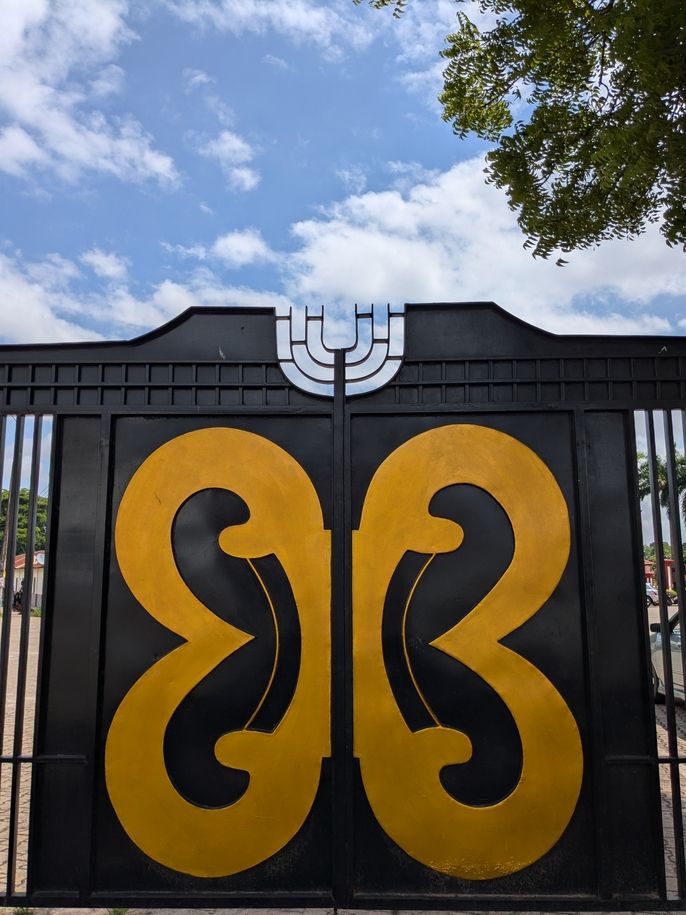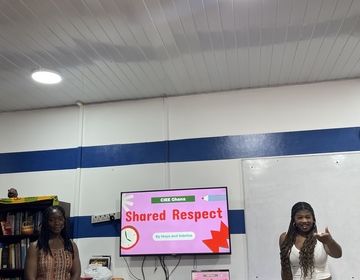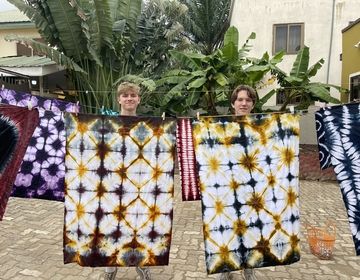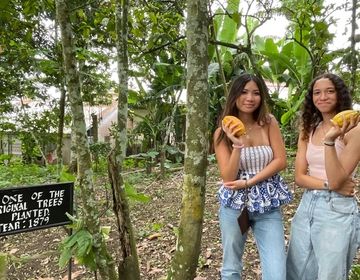Tradition Goes On At The Ntonso Adinkra Village
Among the people of Ghana, many traditional garments used for socio-cultural ceremonies like child outdooring and naming, marriage, funerals, festivals and general gatherings carry messages. These messages can often indicate whether the gathering is for celebration or mourning, who is family and who is not, as well as who is more powerful among all who have gathered. These messages are usually coded in the designs of wax prints and hand-woven textiles. They can also be decoded from the way cloth is wrapped around the body, and in the way smock hat folds are presented at gatherings. For many ethnic groups in northern Ghana for instance, wearing the smock hat in an upright manner is a nod to the power and supremacy of the wearer. Ordinary members of society would therefore not wear their smock hats upright in a gathering with the Overlord of the community present. During gatherings of the Akan people, men with little to no traditional authority are required to greet a King or Paramount chief by lowering their cloths down to their waist. It is respectful to greet the Asante King or Akan Paramount chiefs this way.
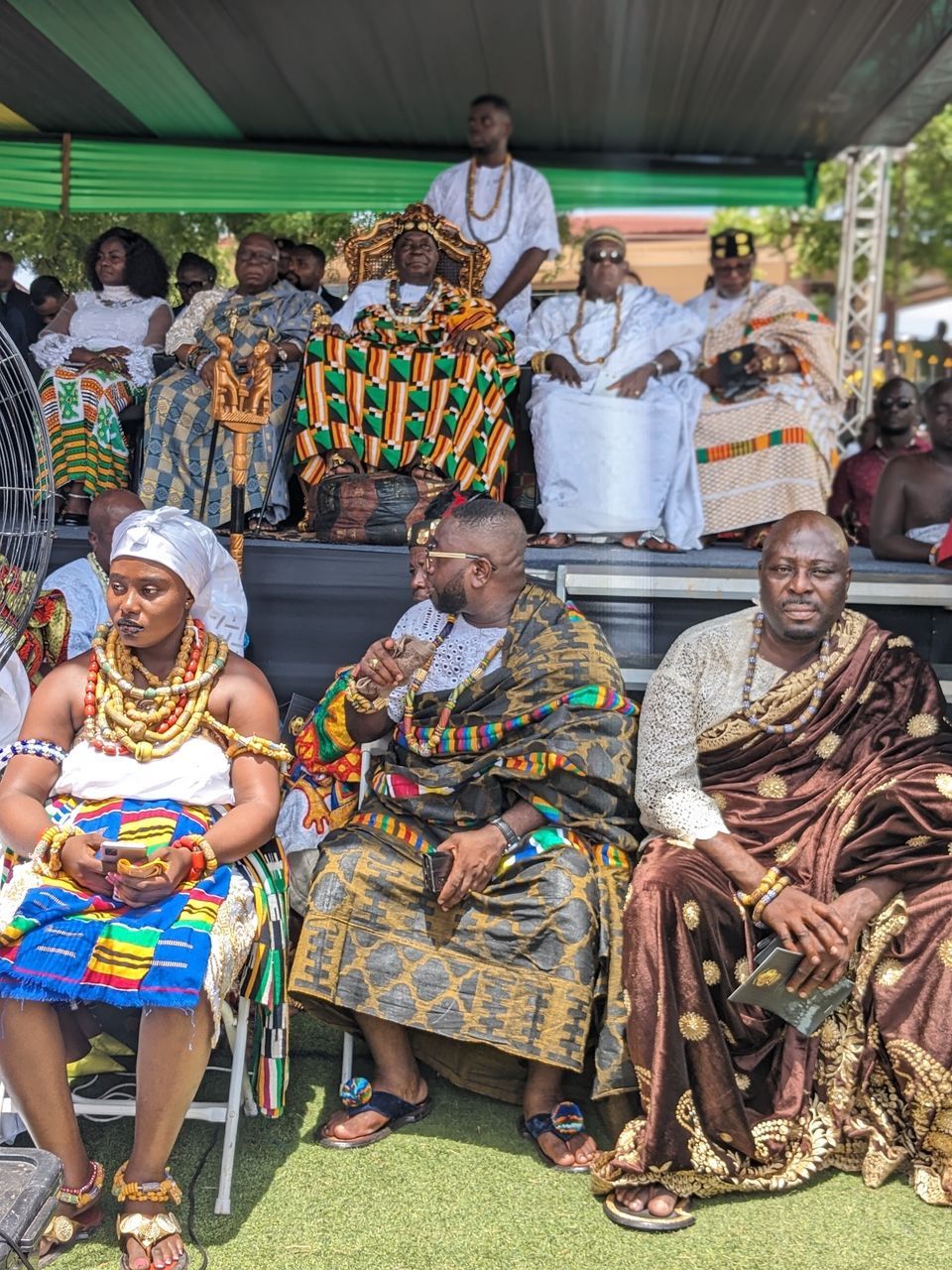
A section of the Anlo delegation featuring Togbe Sri III, ruler of the Anlo people of the Volta region of Ghana. The delegation, dressed in woven textiles and beads handmade by the people of the Volta region of Ghana, was at the Adaekese festival at the Manhyia palace in Kumase. The Asante King received many visitors from all over the country as the festival coincided with celebrations for his 25th year as the King of the Asante people. | Photo: M. Ama Benewaa Tawiah, May 2024
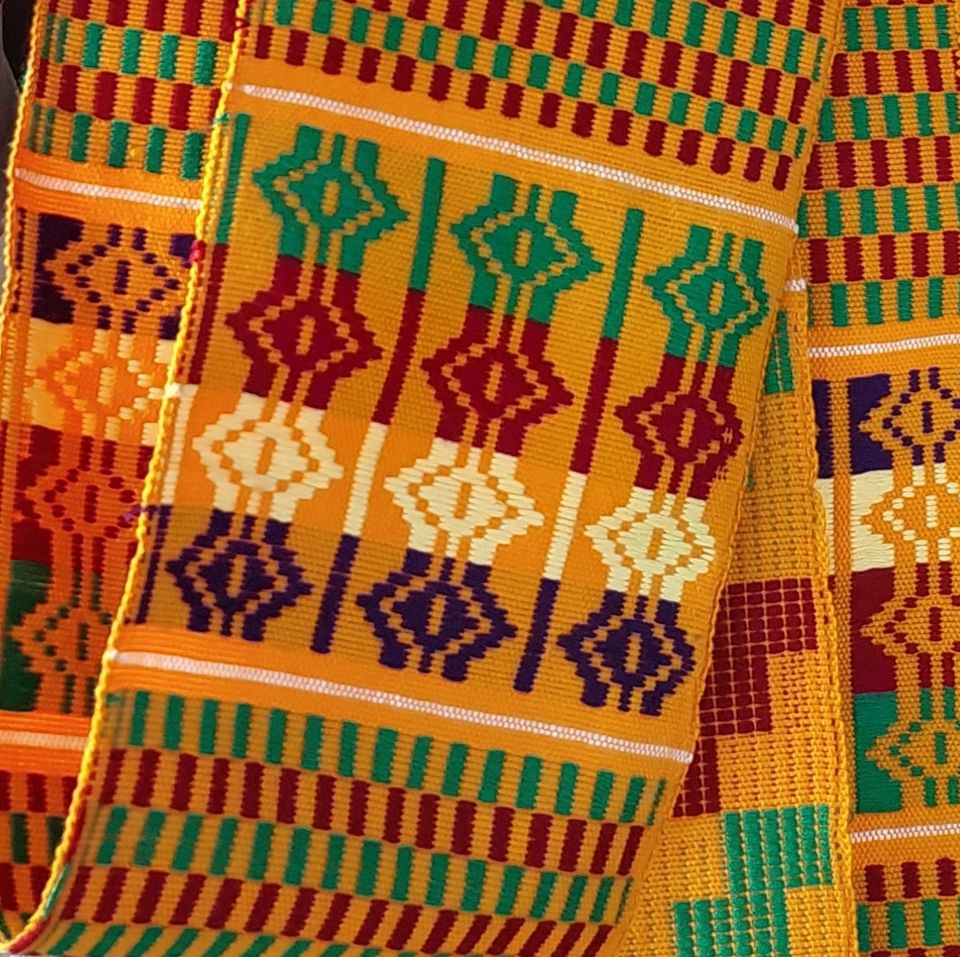
A strip of Kente (woven textile of the Asante people of Ghana) with a message. | Photo: M. Ama Benewaa Tawiah, June 2022
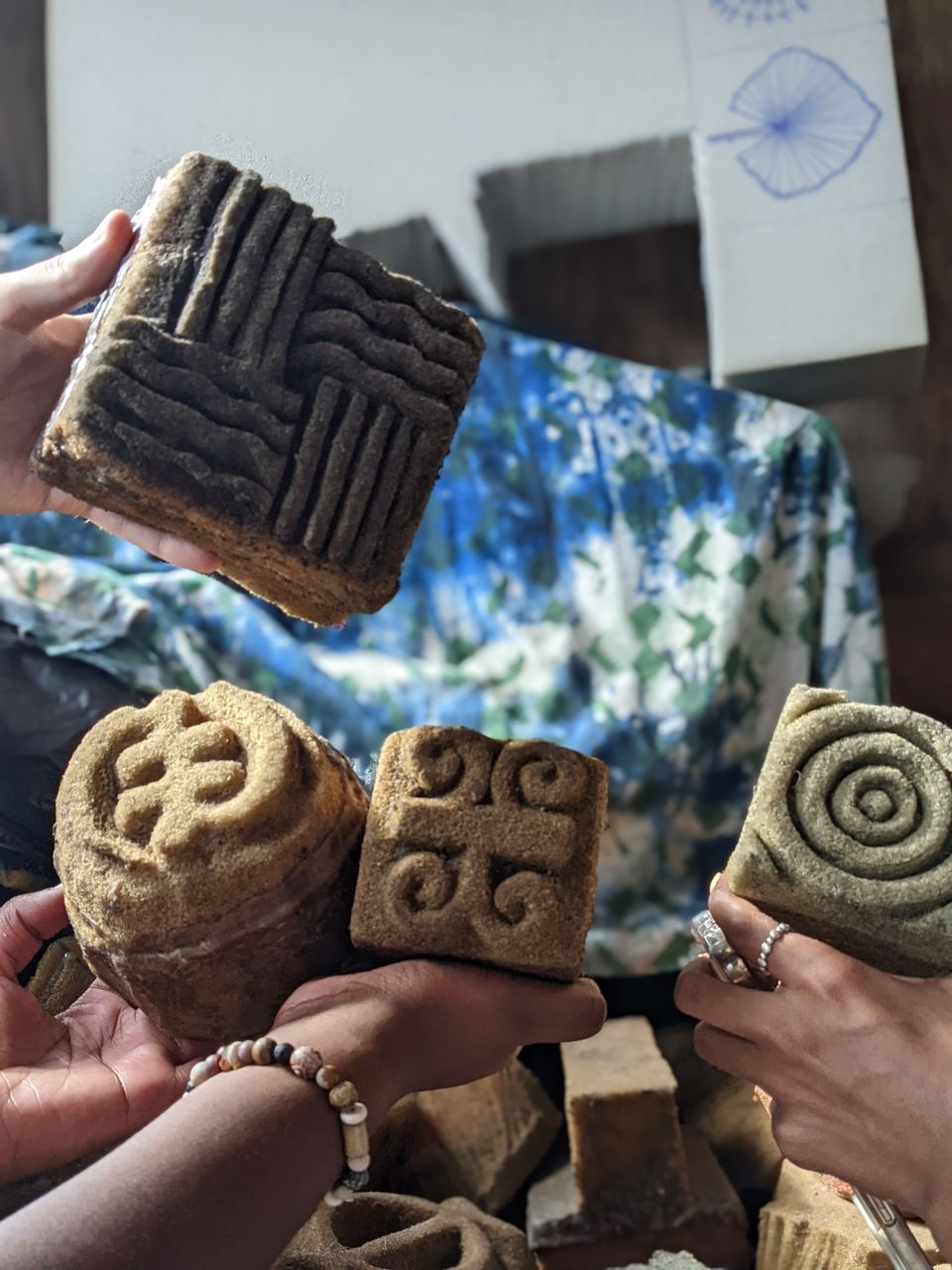
Foam stamps for encoding messages on fabric using the batik method. | Photo: M. Ama Benewaa Tawiah, May 2022
At Ntonso, a town north of Kumase, the capital city of the Ashanti region, the tradition of stamping or embroidering messages on woven textiles and other clothing items via Adinkra is kept alive by young people who have learned the skill from generations of Adinkra artisans before them. The main materials used for the stamping of Adinkra on woven fabric are cuts from calabashes and a natural dye that is generated from softening, pounding and boiling the bark of a particular tree. The longer the substance is boiled, the darker it gets.
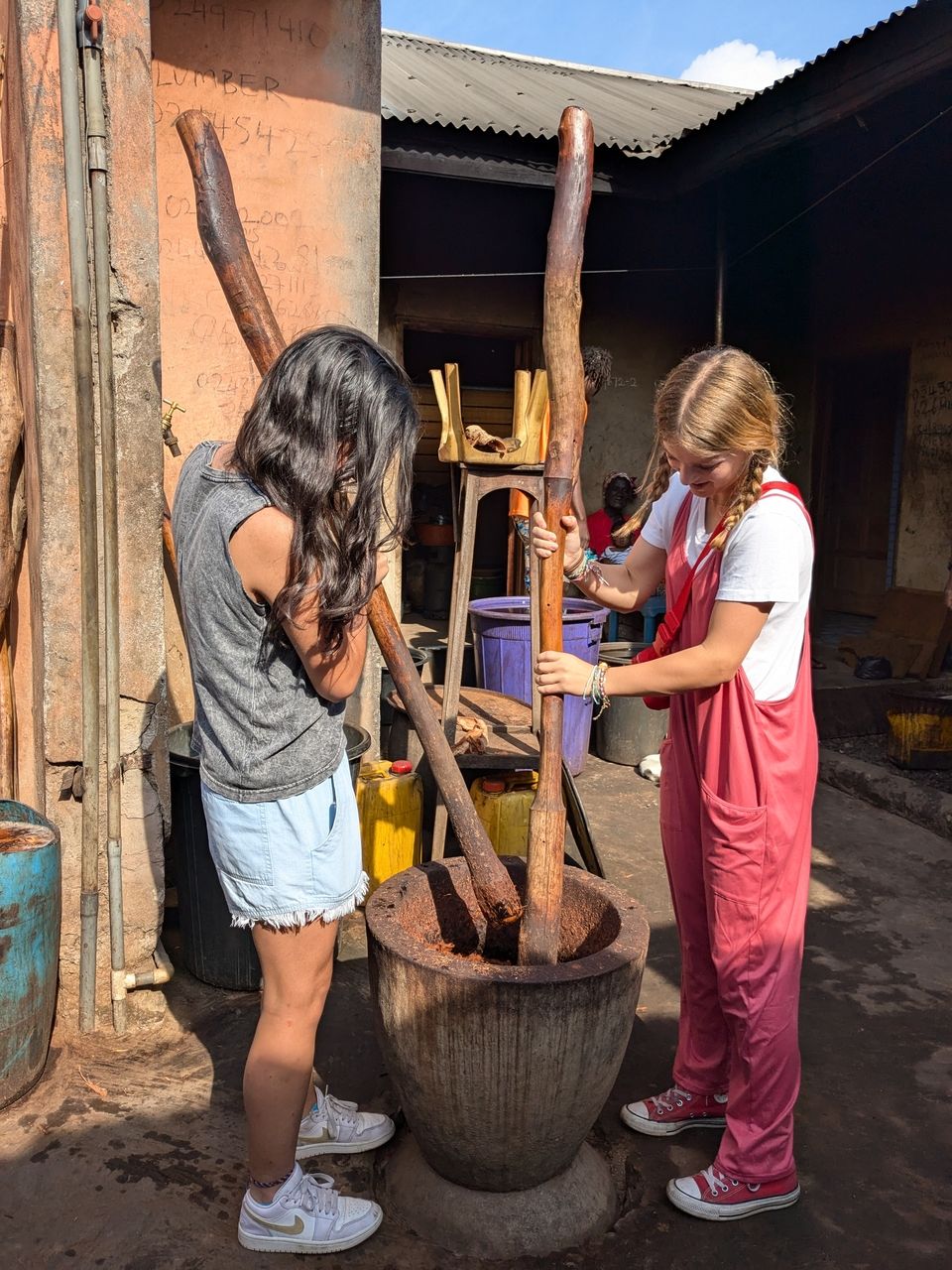
Two students on the 2024 High School Summer Abroad Program, Jillian and Sara, try their hands on pounding the bark of the dye producing tree in preparation for boiling. | Photo: M. Ama Benewaa Tawiah, May 2024
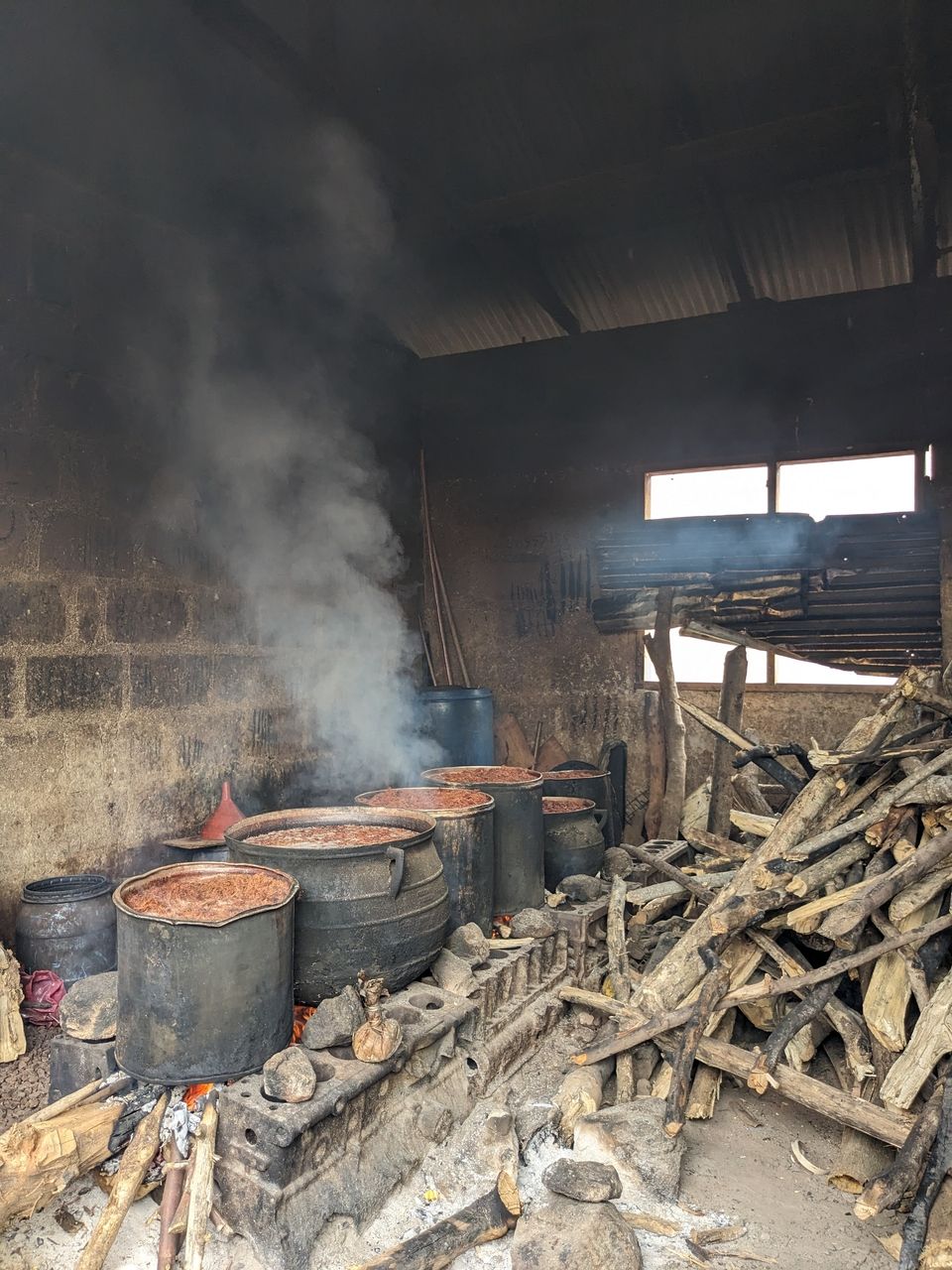
Pounded tree bark left on fire to boil in pots. In the makeshift kitchen is also a pile of firewood used for making fire. Boiling the pounded tree bark produces dye. | Photo: M. Ama Benewaa Tawiah, May 2023

Kojo Adom, a native of the Ntonso Adinkra village pours dye that has been generated from boiling tree bark into a container. When the dye is boiled again, it turns darker. | Photo: M. Ama Benewaa Tawiah, May 2023
To stamp a message on a piece of clothing item, one selects Adinkra carved onto cuts of calabashes, dips it into the carefully prepared dye and then stamps it on the clothing item or piece of woven fabric. The material is then hung to dry for a few minutes before it is ready for use.
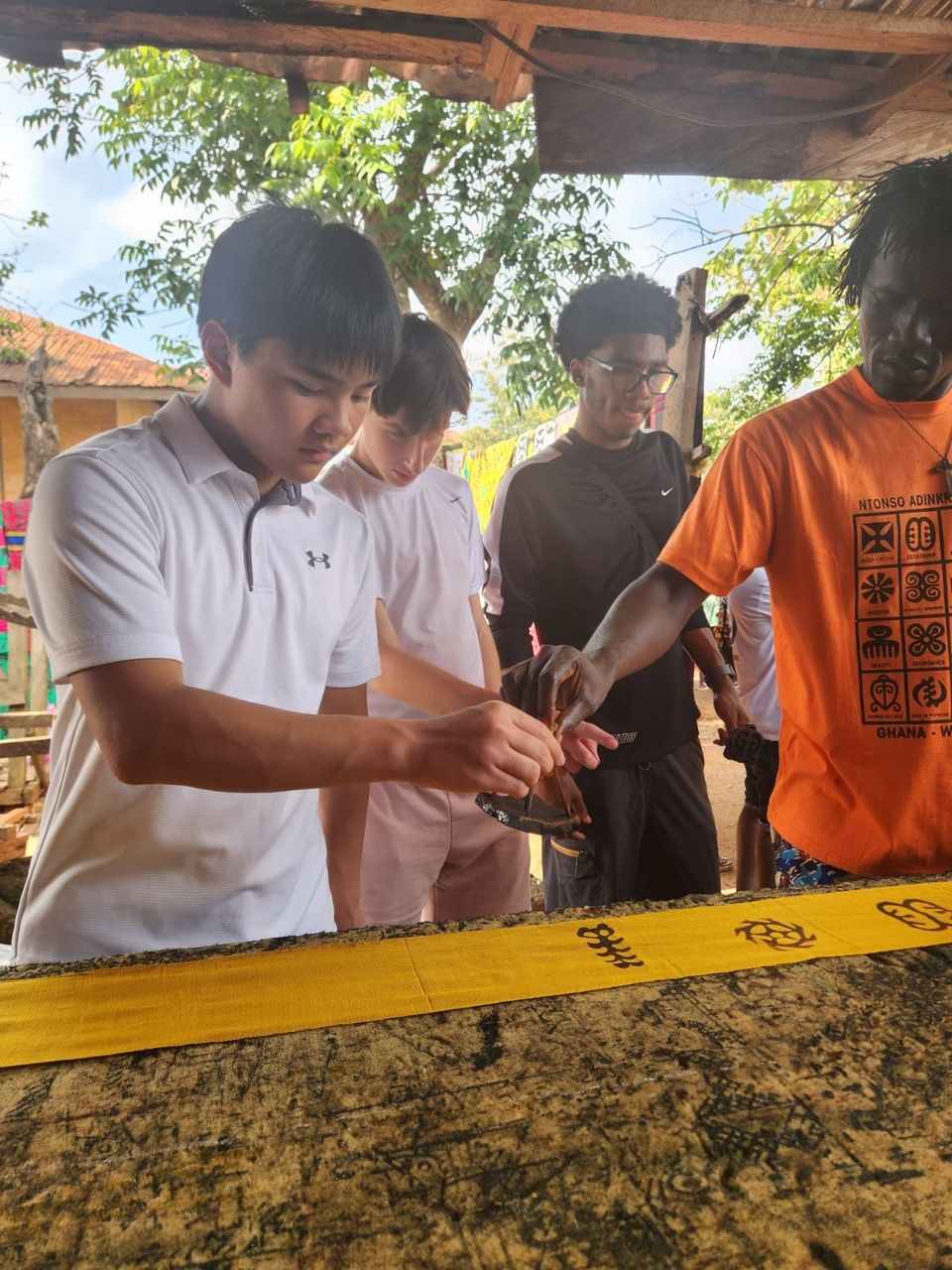
Nicholai, one of the students on the 2024 High School Summer Abroad program gets ready to stamp Adinkra on a strip of woven fabric. | Photo: Myren Bobryk-Ozaki
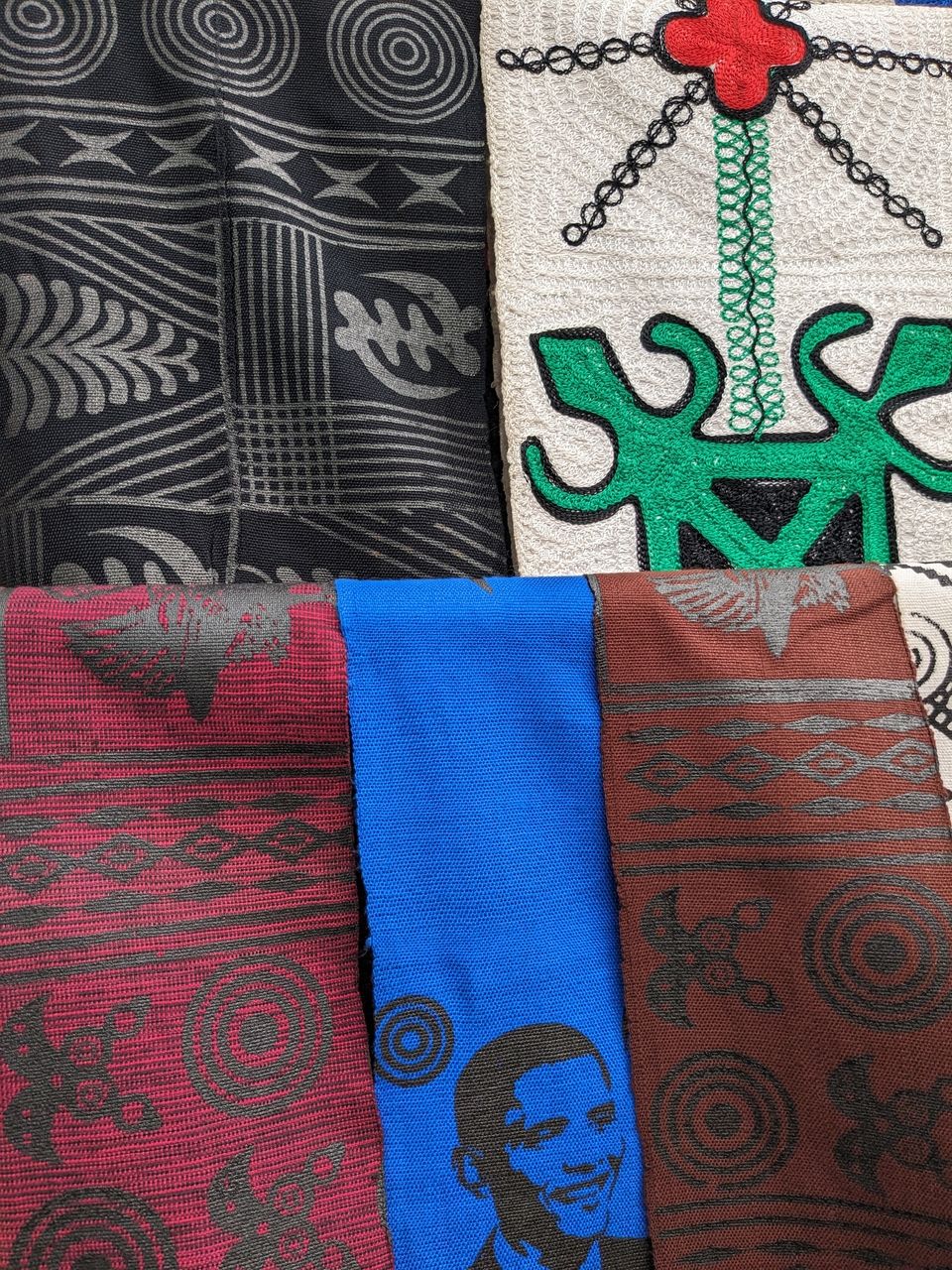
Strips of woven fabric with Adinkra embroidery or dye stamped on them. Innovations also include stamps of prominent figures in various societies. | Photo: M. Ama Benewaa Tawiah
Groups and individuals who visit the Adinkra village at Ntonso get to learn about the process of making the dye and can try their hands on encoding messages. There is also the opportunity to purchase woven textiles with Adinkra stamps.
LET'S DIAL BACK: WHAT IS ADINKRA?
Commonly referred to as adinkra symbols, adinkra are more than symbols. They represent concepts, proverbs and maxims of the Akan people of Ghana and la Côte d’Ivoire. They are believed to have been developed by the Gyaman people in the Bono area. Some popular Adinkra are the ‘Gye Nyame’ which translates to 'Except God' and is a nod to the Omnipotence of the Akan people's Supreme being. The ‘Sankofa’ is another popular Adinkra. Represented by a bird looking back, Sankofa means 'Go back for it'. It is from the maxim It is from the maxim “Sɛ wo were firi na wo san kɔfa a, yɛnkyiri” and means it is not taboo to go back for what you have forgotten. Sankofa encourages learning from the past to inform present and future actions. It encourages going back to one's roots and is popular especially among people of African descent in the diaspora. ‘Duafe’ is another popular Adinkra. ‘Duafe’ is from the two Akan words ‘dua’ and ‘fe’, wood and comb respectively. Together, they translate to wooden comb. Duafe is presented as a six-tooth wooden comb with an oval as its head. The adinkra represents femininity, love, beauty and care.
Some of the less popular but powerful Adinkra include:
‘Nea Onnim’. Nea onnim is from the saying ‘nea onnim sua a, ohunu’ and means when they who do not know learn, they get to know. This Adinkra symbolizes life-long learning. No matter how young or old one is, they can learn new things if they so desire.
‘Abe dua’, the palm tree, which is a symbol of resourcefulness, wealth, and self-sufficiency.
‘Odo nyera fie kwan’. As two spirals that come together to make a heart shape, the symbol represents the idea that love does not lose its way home. It is read another way; that people with pure intentions, will make it to their desired destinations.
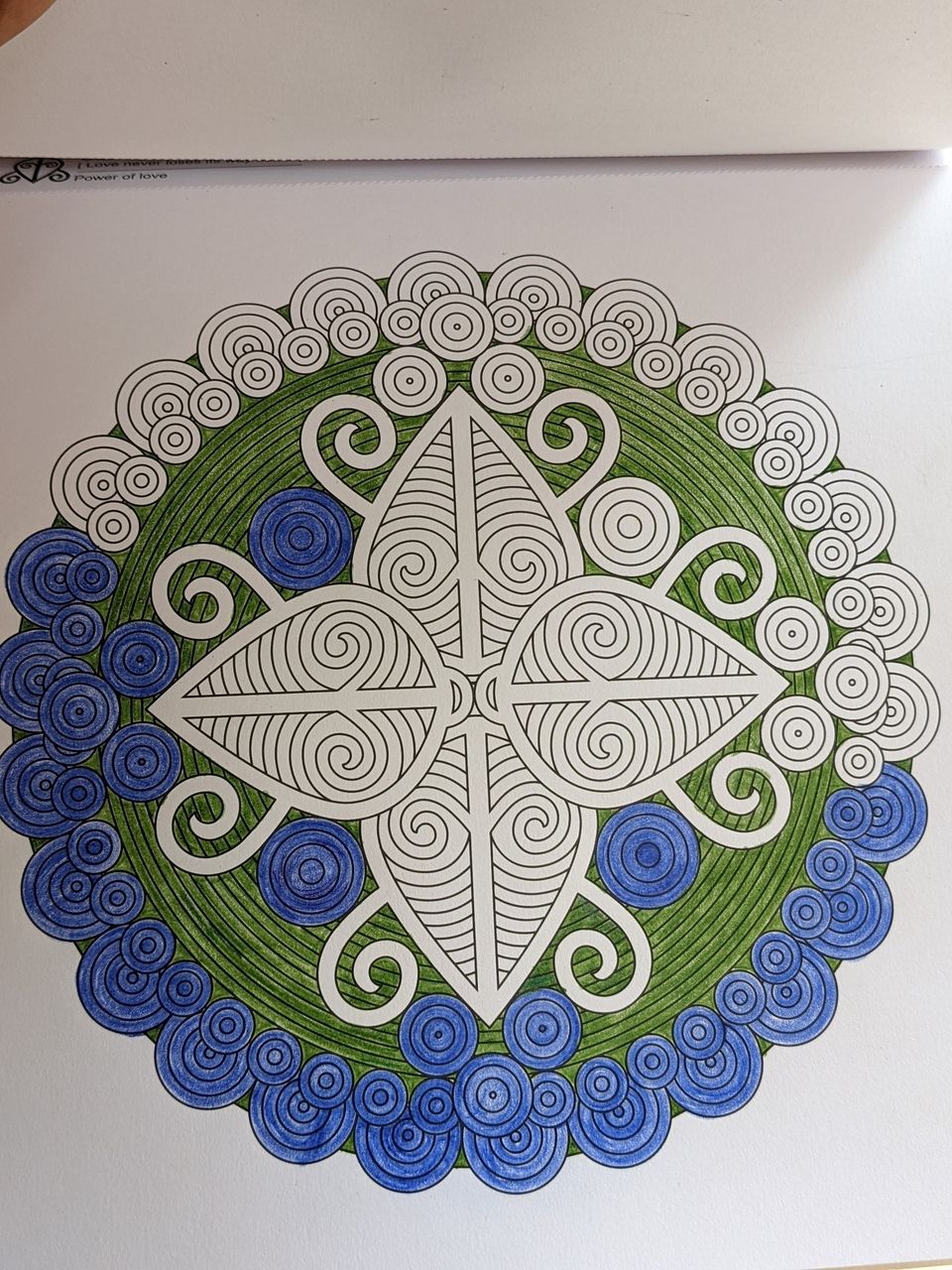
The Adinkra 'Odo Nyera Fie Kwan' in the Akan Symbolism Coloring Book created by Ghanaians Annertey and Bright Owusu | Photo: M. Ama Benewaa Tawiah, 2023
In Ghana, Adinkra are nearly everywhere you go. They are used as logos by institutions and businesses, used in designs in the built environment, and embroidered or hand painted on clothes. These days, one can even find them as elements to be colored in a coloring book. Although a tangible and intangible element of culture of the Akan people, Adinkra are considered a national asset and are held in trust by the National Folklore Board of Ghana.

The Gye Nyame Adinkra on a wall at the Manhyia Palace Museum, Kumase. | Photo: M. Ama Benewaa Tawiah
Are you familiar with Adinkra? Which one are you drawn to the most?
Related Posts
Student Project: Shared Respect
During this program, the participants worked in groups to create projects reflecting their experiential learning from the last three weeks. The following is a selection from Sabrina Addo and Maya... keep reading
Tying Up Loose Ends
With only a few days left in our program, we are embracing every opportunity to make lasting memories and reflect on our incredible journey. One of the highlights of this... keep reading
Visiting Ghana’s First Cocoa Farm
Student Blog Takeover: Milo and Anthea visit Ghana's first cocoa farm
